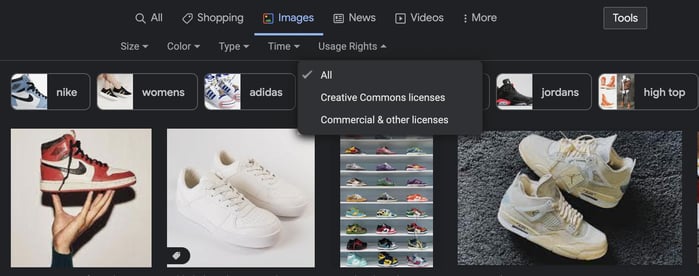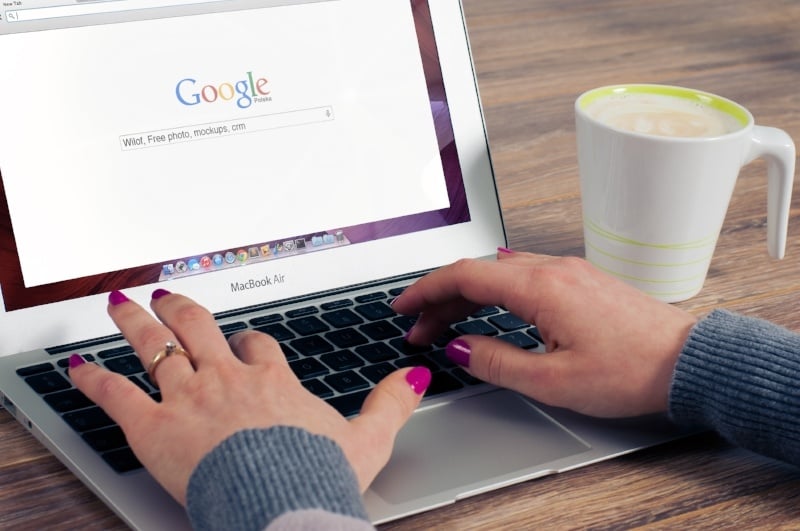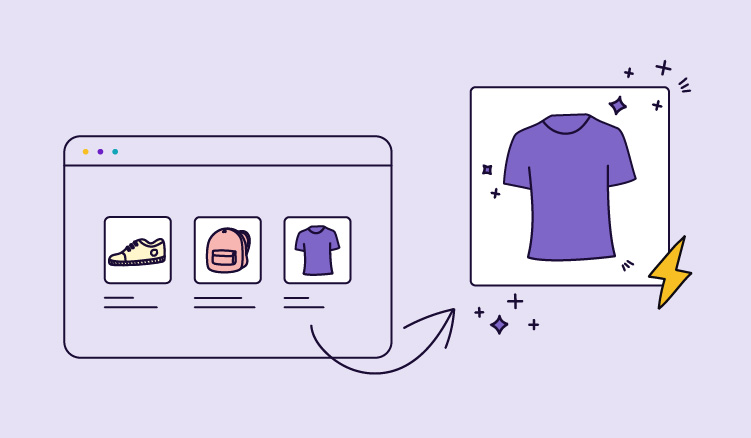For online resellers who have hundreds or thousands of product images, sourcing these can become a daunting task. Looking for product images online leaves you open to accidentally breaking product image copyright laws.
Really? Product Image Copyright Laws?
Yes, copyright laws extend to product images. Copyright laws protect the owner of the imagery and makes sure that their work or property is not misappropriated by giving them exclusive rights to the work. This means they are the only ones who are legally allowed to decide how to use and distribute the photos. Unfortunately, these rules can be largely invisible.
The rule of thumb is this: if you made or commissioned the image, you own it and can do what you want with it. But if it isn't your photo, then what? And why should you even care?
1. It's really easy to screw up
Thanks to Google Images, it's easier than ever to accidentally infringe on product image copyright laws even if you're careful. You may think it's okay to source images directly from Google Images, because, you know, "everyone does it" --- but this is not true. Google Images simply serves as a library of images. Being a large repository does not mean that the product images are available for public and/or commercial use.
"The license filtering tools on Google Images is a good place to start. You can select from various reuse licenses and images that fall under those licenses will be shown in the results. But you will quickly find that your choices become severely limited once you use proper filters, more so if you are looking for product photos. This is a perfect example of how easy it is to break copyright laws without even trying." - says Lewis Banks, one of senior managers at LegalDrop.com

Using the license tools doesn't guarantee that you will be able to avoid copyright infringement. Certain images require attribution (naming and linking back to the source) in order to be used. You also won't be able to figure out if a photo has copyright restrictions just by looking at it, as we said before these rules are largely invisible. Watermarks and other signs of copyright are not necessary for copyrighted product images. Sometimes it is impossible to tell unless you contact the owner and ask.
2. Attribution is not enough
It may not be enough to attribute the photo to someone in order to avoid copyright infringement. The idea here is that you do not have the right to use these photos however you please, this is solely up to the copyright holder. So simply stating where you got the photo means nothing.
This exists for many reasons -- imagine you commissioned images for use on your website, only to find out someone used your images in an e-book that they are selling. They attributed the images to you, so everything should be fine, right? Wrong. They never asked permission; they free-loaded off of your investment, and have diluted the originality of your images. You wouldn't be happy, so why do you think someone else would shrug their shoulders in indifference?
3. You could get fined up to $150,000 per photo
Okay, you probably won't end up getting fined that much, but it isn't an unreasonable expectation to get smacked with a $30,000 fine per photo. And that's not counting any associated legal fees. Remember our friend Google Images? Lawyers can use it and other image recognition software to identify unlawful use and target shop owners for easy lawsuits.
Copyright laws are such that an individual can be held accountable, specifically the owner of the website in question. This means if your intern, freelancer, or even marketing department unintentionally sources copyrighted product images, you, as the owner, are likely to be held liable. This has big implications for the future of your ecommerce business and even your reputation.
So what can you do about it?
Luckily are ways to be confident in your image sourcing and reduce your risks of breaking copyright laws:
- Take copyright seriously, know your own liabilities, and get real legal advice for guidelines regarding the most up to date product image copyright laws. Copyright laws vary by country and region so being informed about your own situation is extremely important.
- Take the product images yourself. If you created the image, it is yours. However, if you hire a photographer, you need to make usage rights as clear as possible, otherwise you are back to square one.
- Avoid Google Images, unless you are absolutely sure you know what the usage rights are for an image. Who knows what could happen?
- Find a trusted source from which to get your product images, like the brands or manufacturer's themselves.
How Plytix can help
Using images supplied directly from the brands or manufacturer's themselves significantly reduces the possibility of copyright infringement. Plytix PIM provides a place where they can publish content download centers directly to their website. Brands control all images available or can push them directly to a retailer's webshop. This means retailers can get custom catalogs quickly and with confidence.
Frequently Asked Questions
- Search for attribution or the owner's contact information accompanying the image.
- Check for any visible watermark that indicates ownership.
- Inspect the picture's embedded metadata for copyright claims.
- Utilize Google's reverse image search function to track the picture's usage.
- Consult the database of the United States Copyright Office for registration information.
- Bonus Tip: When uncertain about the image's copyright status, err on the side of caution and refrain from using the image.




